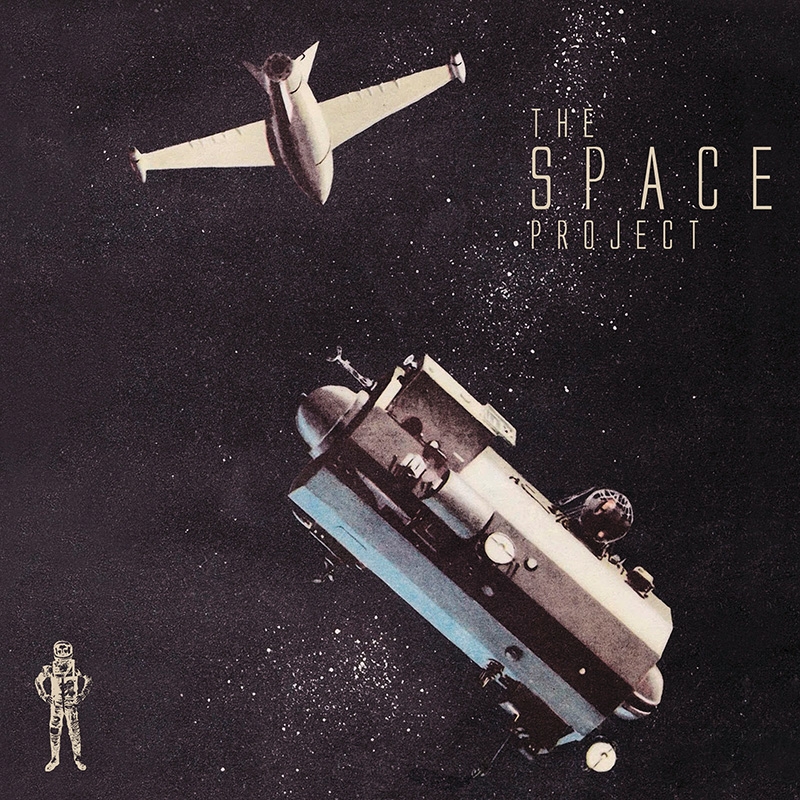
Sounds From Out There: Records, Record Store Day And Singing Planets
Music Interviews
Last September, the Voyager 1 left our solar system. That cold little coffin containing all of what mankind thought was important in 1977 is now careening through uncharted interstellar space. Onboard that space craft is a gold-plated phonographic record containing images and sounds that represent a fairly decent cross-section of human and animal life, as well as a record of some of our best scientific achievements up to that point. When examined in the context of historical record keeping, physical media will always be used as an artifact. When it comes to recorded music, the distinct artifact-ness (you can heft, touch, handle it) of vinyl records make them an endearing part of the human condition. The things we cherish the most require some sort of tactile proof they exist.
To this end, on April 19, Lefse Records (pronounced leff-suh) is putting out a very special box set of seven 7” records inspired by the Voyager 1. The Space Project began with an incredible premise in mind. While passing through our solar system, Voyager 1 picked up and recorded portions of each planet’s electromagnetic spectrum. These fluctuations in the radiation of the magnetosphere of each planet produced “sounds” (permanently in quotes here because they aren’t sounds, per se) that change in their timbre and pitch relative to the size and mass of each object. These are the sounds of planets singing.
These recorded fluctuations are now public domain. When Lefse Records founder Matt Halverson listened to these sounds and heard the inherent musicality of each tone, this idea was born: Commission a bunch of different artists to implement these sounds to whatever end they feel appropriate in their composition. The result was as varied as the names on this compilation. Some of them are pretty obvious—how are you going to make a compilation literally using space sounds and not call up J. Spaceman? Halverson opted to keep the rules for this project loose to non-existent. The only qualification was that each artist had to use the “sounds” of each planet/moon in their composition. Each artist was commissioned to a different planet or moon (Miranda is a moon of Uranus; Io is one of Jupiter’s moons). Halverson half-feared that artists would use this project as a vehicle to flex their avant-garde muscles. He says, “I was afraid that everyone was going to take this one-off release and make something non-music like or bizarre.” The result is anything but. “I was surprised by Youth Lagoon, Mutual Benefit, Spiritualized and Beach House, artists who actually wrote lyrics and made a song out of it. I was hoping for that, but not fully expecting it,” he says.
Each utilized these “sounds” to different ends. Youth Lagoon chopped and condensed Uranus’ fluctuating radiation into sharp, static-laden beats for his otherwise straightforward pop track, “Worms.” Other artists used their respective “sounds” to create a shimmering noise floor or an elongated drone that complemented or matched their guitar/synth tones: creating warm, celestial sounds. Halverson was especially impressed by the way Blues Control was able to perfectly tune their guitars to the key of Uranus and play within that tone. The Antlers completely cut loose from their celebrated, emotion-filled pop song and used these “sounds” as what Halverson calls “a kind of guitar solo” in their droning, instrumental composition.
Other artists sharing a more experimental/electronic bent used these “sounds” as an additive tone to their already dream-like soundscapes. While nothing sounds forced on this record, artists such as Zomes, Anna Meredith, Jesu and Absolutely Free share the most in common with the unfiltered, unedited “sounds” radiating somewhere in the galaxy. Commenting on the inherent musicality of these “sounds,” Halverson says, “I was shocked at how much it sounded like very minimal, droning, dense electronic music.” The pitch, timbre and tone of these “sounds” allowed these artists who work with ambient sounds to effortlessly fold them into their soundscape, creating a compilation that is endlessly varied and listenable.
There is a great scene in the beginning of the movie Contact where the camera starts on Earth and gradually zooms out, moving beyond our solar system and eventually beyond our galaxy. As the camera pulls away, we hear radio transmissions from our past eras grow fainter and fainter until we are beyond the limit that these sounds can reach. Similarly, as we experience more and more media through a digital format, it is important that we have a counter-balance to the somewhat ephemeral nature of digital consumption. The fact that a physical artifact, a record, is still out there traveling alone, traveling with mankind’s accumulated knowledge and experience on a gold-plated disc, gives some weight to the importance of physical media. We record our history on physical artifacts. The way we may communicate with extra-terrestrial life is through a record. Kinda gives more significance to Record Store Day, huh?
The Space Project will be available as a limited-edition box set on April 19 through Lefse Records at your favorite record store.


